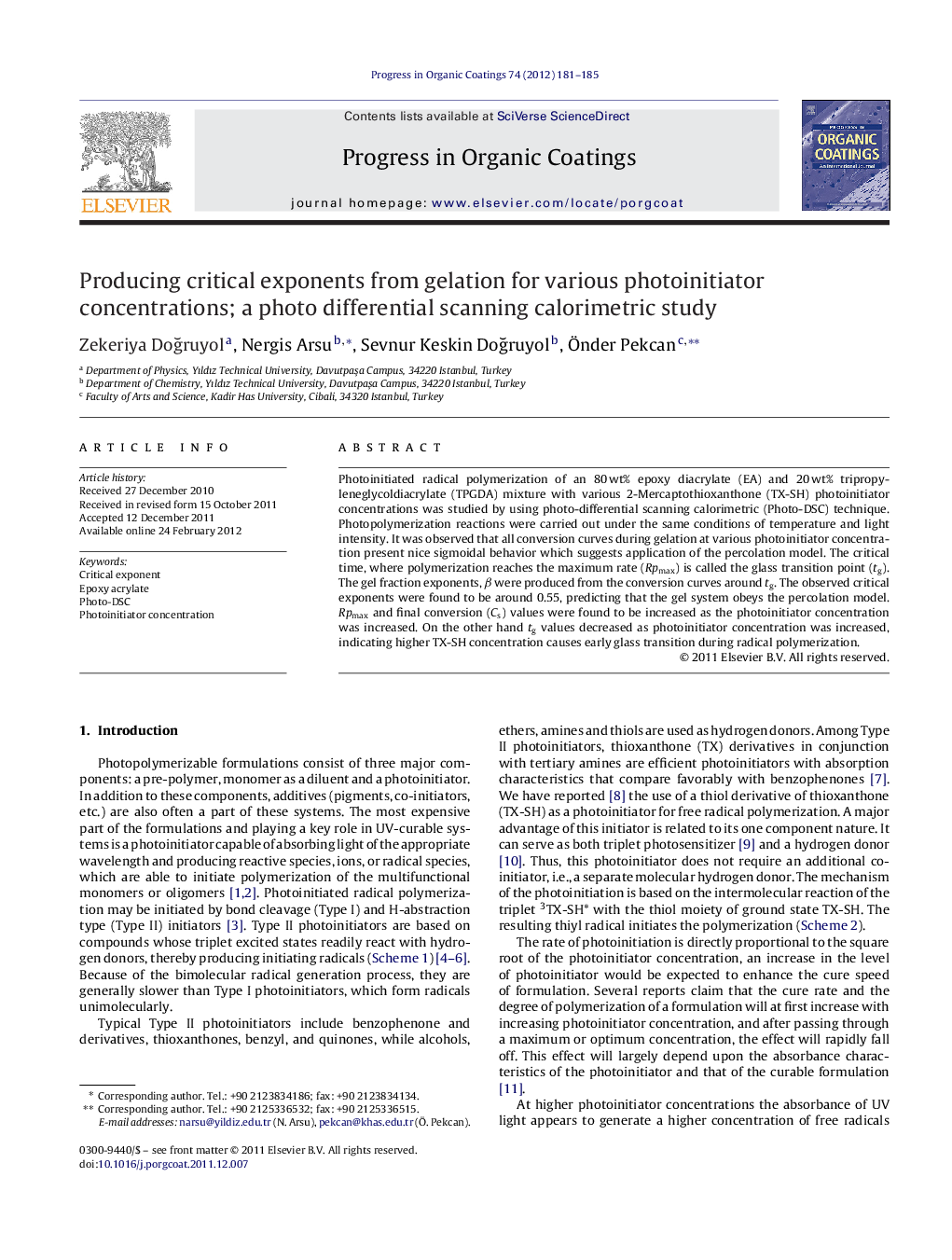| Article ID | Journal | Published Year | Pages | File Type |
|---|---|---|---|---|
| 693333 | Progress in Organic Coatings | 2012 | 5 Pages |
Photoinitiated radical polymerization of an 80 wt% epoxy diacrylate (EA) and 20 wt% tripropyleneglycoldiacrylate (TPGDA) mixture with various 2-Mercaptothioxanthone (TX-SH) photoinitiator concentrations was studied by using photo-differential scanning calorimetric (Photo-DSC) technique. Photopolymerization reactions were carried out under the same conditions of temperature and light intensity. It was observed that all conversion curves during gelation at various photoinitiator concentration present nice sigmoidal behavior which suggests application of the percolation model. The critical time, where polymerization reaches the maximum rate (Rpmax) is called the glass transition point (tg). The gel fraction exponents, β were produced from the conversion curves around tg. The observed critical exponents were found to be around 0.55, predicting that the gel system obeys the percolation model. Rpmax and final conversion (Cs) values were found to be increased as the photoinitiator concentration was increased. On the other hand tg values decreased as photoinitiator concentration was increased, indicating higher TX-SH concentration causes early glass transition during radical polymerization.
► Photoinitiator concentration in UV-curable systems is very crucial for coatings industry in terms of lower costs. ► The effect of photoinitiator concentration on photopolymerization kinetics were investigated by Photo-DSC. ► The critical exponent β can be efficiently studied during gel formation. ► β displayed no variation during photopolymerization of acrylates with changing of photoinitiator concentration.
